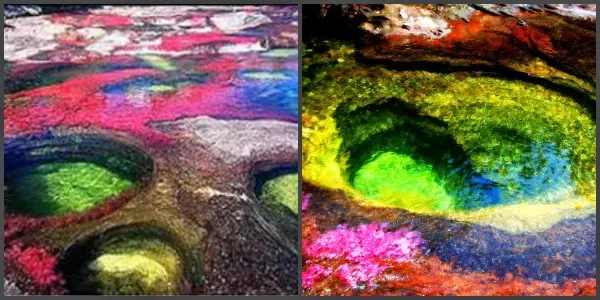Caño Cristales: The River of Five Colors
The River of Five Colors, also known as Caño Cristales, is a stunning natural wonder located in Serranía de la Macarena, a national park in Colombia. Often referred to as the "Liquid Rainbow" or the "Most Beautiful River in the World," it is famous for its vibrant and multicolored appearance, especially during the wet and dry seasons (typically between July and November).
Why Is It Called the River of Five Colors?
The River of Five Colors is a natural wonder celebrated for its vibrant display of yellow, green, blue, black, and red hues. This mesmerizing palette is the result of a unique interplay between endemic aquatic plants, algae, minerals, and the riverbed's natural composition. The most striking contributor to its vivid red and pink tones is Macarenia clavigera, a rare aquatic plant that thrives in the river's clear waters. During the transitional period between the wet and dry seasons—typically from June to November—this plant blooms in spectacular fashion, transforming the river into a living canvas of color.
The river's ever-changing appearance is further influenced by sunlight, water levels, and the surrounding lush vegetation. Blue water contrasts with the red and pink hues of Macarenia clavigera, while green algae and yellow sands add depth to the kaleidoscope. Together, these elements create a dynamic and otherworldly spectacle, earning the river its well-deserved nickname as the "Liquid Rainbow.
Caño Cristales is fast river with many rapids and waterfalls. Often in the bed have formed small circular pits - giant's kettles, which have been formed by pebbles or chunks of harder rocks. When one of these harder rock fragments falls into one of the cavities, it is rotated by the water current and begins to carve at the cavity wall and increases the dimensions of the pit.








%20(1).webp)





